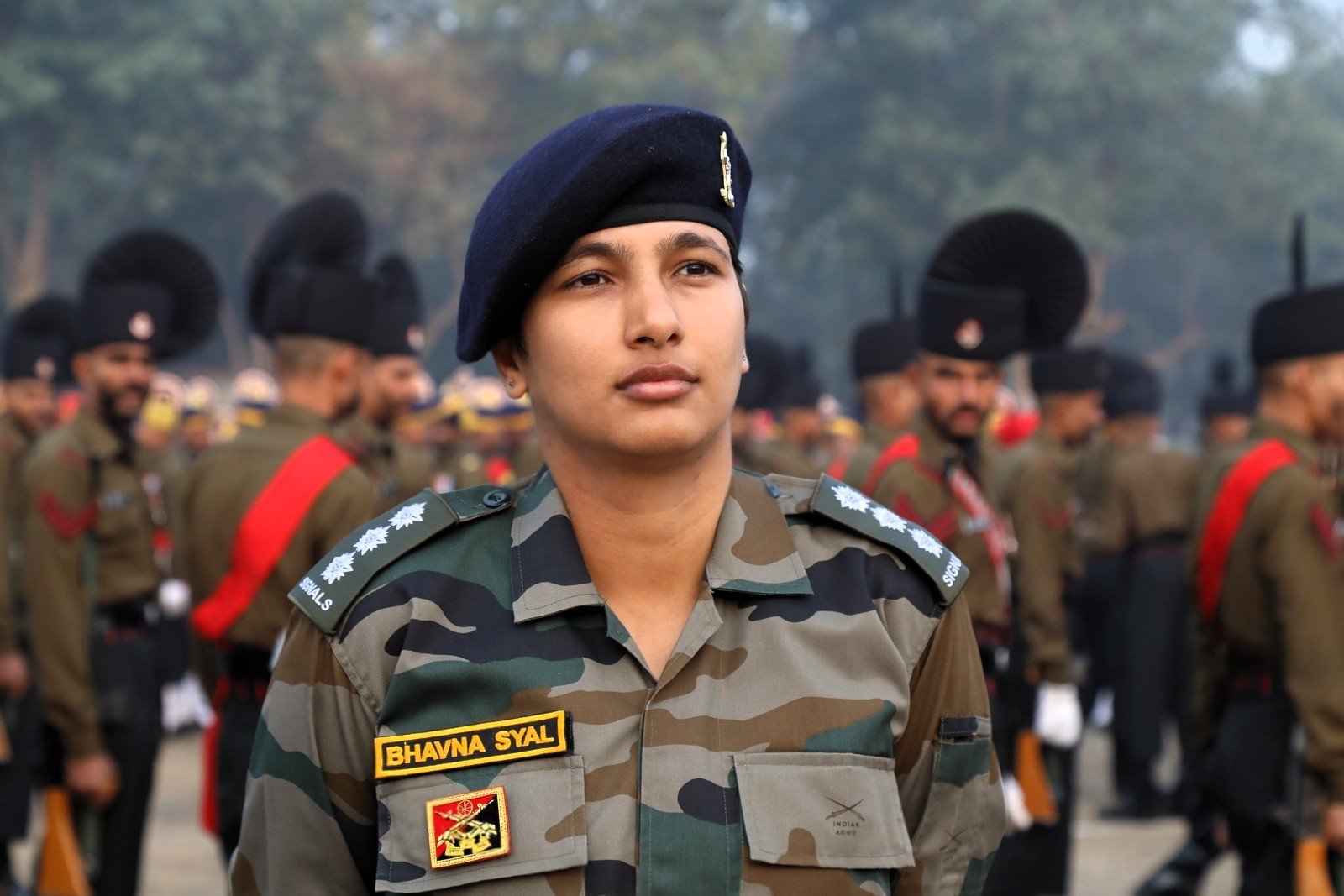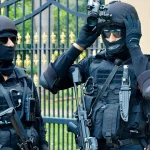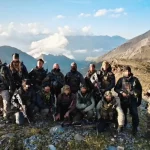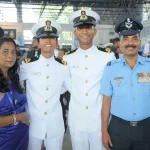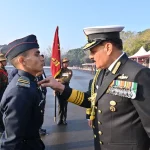In the framework of the Indian Army, the role of a Captain emerges as a pillar of leadership and operational integrity. Captains carry the profound responsibility of commanding a company-sized unit, typically comprising around 100 to 150 personnel. This article delves into the intricacies of the powers and duties of an Indian Army Captain, showcasing their tactical, administrative, and welfare roles that significantly impact the operational efficacy and morale of their units.
Historical Context
The rank of Captain in the Indian Army has a storied history deeply entwined with the evolution of military command structures. The role has transformed over the decades, shaped by India’s geopolitical landscape and the complexities of modern warfare. Originally established during British colonial rule, the concept of a Captain has evolved to reflect contemporary military needs, emphasizing leadership, tactical acumen, and soldier welfare.
As the world changed post-independence, the Indian Army adapted its structures and ranks to respond to new challenges. The role of Captain became increasingly critical, providing a clear command chain that facilitated effective leadership at company levels. Today, these officers are regarded as the backbone of tactical operations, embodying the values and ethos of the Indian Army.
Powers of an Indian Army Captain
An Indian Army Captain wields significant authority that influences not just the operational capabilities of their unit but also the lives of the personnel under their command. Here, we explore these powers in detail.
Command Authority
Captains are entrusted with command authority over a company or equivalent sub-unit. This responsibility includes:
- Issuing Orders: A Captain directs Lieutenants, Junior Commissioned Officers, Non-Commissioned Officers, and Other Ranks to ensure operational effectiveness.
- Maintaining Discipline: They play a crucial role in instilling discipline, impacting the overall morale and efficiency of the unit.
- Operational Oversight: Captains oversee the implementation of orders and strategies, ensuring that their directives are understood and executed by their subordinates.
Disciplinary Powers
Captains have the authority to maintain discipline within their unit. This includes:
- Enforcement of Rules: They can issue reprimands for minor infractions and implement corrective measures aimed at improving conduct.
- Formal Disciplinary Proceedings: For serious violations, Captains can initiate formal proceedings, recommending punishments and escalating matters to higher authorities as necessary.
Operational Decision-Making
In terms of combat, an Indian Army Captain has the autonomy to make tactical decisions in real-time. Key responsibilities include:
- On-Ground Decision Making: Captains must assess rapidly changing situations and determine the best courses of action for their company.
- Coordination with Other Units: They liaise with adjacent units to ensure unified operations and effective tactics.
Training Oversight
Training is critical for maintaining a unit’s combat readiness. Responsibilities here encompass:
- Designing Training Programs: Captains create comprehensive training schedules that include drills, exercises, and evaluations to foster skills and enhance operational readiness.
- Ensuring Physical Fitness: They also oversee the physical conditioning of their troops, ensuring they meet the rigorous standards required for effective service.
Administrative Control
Administrative tasks are essential for operational continuity. Captains manage:
- Personnel Records: They are responsible for keeping accurate records of all personnel, managing promotions, evaluations, and welfare issues.
- Logistics Management: Responsibilities also include resource allocation, equipment maintenance, and supplies necessary for the company’s operational effectiveness.
Welfare Advocacy
Ensuring the welfare of soldiers is a central duty of a Captain. They are responsible for:
- Addressing Concerns: Captains are the first point of contact for soldiers facing issues related to equipment, living conditions, or health.
- Raising Issues: They channel concerns upwards to Battalion or higher commanders, advocating for the needs of their troops.
Duties of an Indian Army Captain
While powers convey authority, the duties of a Captain reflect their responsibilities to the soldiers and the mission. These duties reinforce their pivotal role in the Indian Army’s operational success.
Leadership
Leadership entails more than just guiding troops; it involves:
- Building Morale: A Captain must cultivate a positive atmosphere, fostering camaraderie and a sense of belonging within the unit.
- Disciplined Environment: Ensuring that discipline is adhered to while leading by example forms the cornerstone of effective leadership.
Operations
Captains are involved in planning military operations, conducting reconnaissance, and strategizing with other units. Specific duties include:
- Mission Planning: They coordinate combat operations, devising strategic plans to execute missions successfully.
- Execution Oversight: Captains ensure that the plans are implemented correctly, coordinating troop movements during tactical operations.
Training and Readiness
A key part of their duty involves maintaining high training standards within the unit:
- Regular Drills: Captains conduct periodic evaluations and readiness drills to ensure that troops are prepared for any eventuality.
- Skill Enhancement: Continuous training assessments are made to identify and fill skill gaps, thereby enhancing the overall effectiveness of the unit.
Administration
Alongside operational duties, Captains are deeply involved in administrative management:
- Performance Evaluations: They assess soldiers’ performance, providing feedback that aids in career advancement.
- Disciplinary Enforcement: Handling minor disciplinary issues and maintaining order serves as a routine duty, crucial for the smooth running of the unit.
Mentorship
Mentorship plays an essential role in the career development of junior officers and soldiers:
- Guiding Junior Officers: Captains mentor Lieutenants and junior commissioned officers, offering advice and sharing experiences to foster their growth.
- Career Development: They play an integral part in the professional journey of soldiers, guiding them towards further development opportunities.
Statistical Data and Research Insights
The role of an Indian Army Captain can be understood better through statistics and data reflecting their importance and the challenges they face.
- Personnel Size: Captains typically manage a company of around 100 to 150 personnel, necessitating strong leadership and organizational skills to ensure effective command.
- Discipline and Morale Statistics: Research indicates that proper enforcement of discipline and maintenance of soldier morale directly correlate with unit operational effectiveness. Units led by effective Captains often report higher levels of satisfaction and performance metrics.
Comparative Analysis
When comparing the role of an Indian Army Captain to that of captains in other military forces, several distinctions emerge. For instance, in Western armies, the responsibilities of a Captain may also include more complex strategic education and a strong emphasis on joint operations. The difference in training, cultural context, and operational needs tend to shape the Captain’s role in varying militaries.
For example, in the United States Army, the focus on combined arms operations and joint inter-service exercises necessitates a broader scope of responsibilities, from logistics management to advanced tactical planning. Conversely, an Indian Army Captain’s responsibilities are tailored more towards immediate operational success and soldier welfare in a unique geopolitical context.
Challenges and Solutions
Despite their authority and responsibilities, Indian Army Captains face numerous challenges, including:
- Resource Constraints: Often, Captains must operate under limited resources and equipment shortages, which can impede operational effectiveness.
- Human Resource Management: Balancing the needs of diverse personnel while maintaining unit cohesion can be complex, particularly in high-stress situations.
- Maintaining Morale: The dual pressures of operational demands and administrative duties can lead to burnout, affecting both the Captain and their troops.
Potential Solutions
To address these challenges, several measures can be introduced:
- Enhanced Training and Resources: Providing Captains with access to better training tools and resources can enhance their leadership capabilities and operational readiness.
- Promoting Mental Health Initiatives: Implementing programs focused on mental well-being can help maintain morale and reduce stress among Captains and their units.
- Streamlining Administrative Processes: Using technology to automate administrative tasks can free up Captains to focus more on leadership and operational responsibilities.
Future Trends and Predictions
As the Indian Army continues to evolve in response to modern challenges, the role of the Captain is likely to undergo significant changes:
- Increased Technology Integration: With advancements in technology, Captains will increasingly employ data analytics and communication tools in operational planning and execution.
- Emphasis on Joint Operations: Future Captains might see an enhanced role in joint operations, collaborating more frequently with other services and allied nations.
- Focus on Soldier Welfare: As awareness of mental health and soldier welfare grows, Captains may be required to undertake more initiatives that support their personnel on and off the battlefield.
Conclusion
The role of an Indian Army Captain is both powerful and demanding, embodying a vital link in the command structure and daily operation of army units. With significant authority over personnel, operational decisions, and the moral fiber of their companies, Captains serve not only as leaders but as mentors who shape the future of military service. Their multifaceted responsibilities reflect the complexities of modern warfare and the necessity for capable, resilient leaders.
As the Indian Army looks to the future, supporting and empowering Captains through advanced training, resource allocation, and mental health initiatives can ensure that they continue to excel in their essential duties. For aspiring military leaders, understanding the pivotal role of a Captain can serve as an inspiration as they navigate their paths within the illustrious Indian Army.
For those interested in exploring the nuances of military leadership and preparing for careers in defense, resources from SSBCrack and SSBCrackExams offer valuable insights and study materials that can aid in pursuing these ambitious paths.

